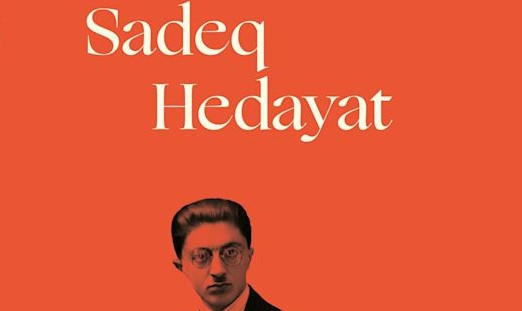Kafka of Eastern Literature: Who is Sadegh Hedayat?
Sadegh Hedayat is one of the important names of 20th-century literature with his works. Best known for his novel The Blind Owl, he was one of the earliest Iranian writers to adopt literary modernism in their career.

The 19th century was also a period in the history of Iran, in which important steps were taken in the field of modernization. The lands lost to Russia and England, trying to develop the country by keeping up with the West accelerated the beginning of this period. Especially during the reign of Nasiruddin Shah, who reigned in Iran between 1848-1896, many important innovations were made with the support of reformist statesmen. Music, which was not favored before, rose to an important position in this period. Darü'l Fünun was opened and teachers were brought from Europe to teach here. Again, in order to get to know Western culture, young people were sent to Europe to receive an education.
Sadegh Hedayat (17 February 1903 – 9 April 1951) was an Iranian writer and translator. Best known for his novel The Blind Owl, he was one of the earliest Iranian writers to adopt literary modernism in their career.
With the reforms made in the tax system, the budget was balanced, the authority of the clergy was limited and many reform movements such as these were carried out in the country. However, these policies were not welcomed by everyone and Nasiruddin Shah was assassinated. Afterward, a mixed environment emerged in the country.
Sadik Hidayet, who belongs to an aristocratic family, was born in Tehran in 1903, in such an environment of Iran. He had to take a break from his education for about a year due to an eye infection when he was 13 years old.
In the following years, he went to the French High School named St Louis in Iran to get his high school education. After graduating from high school, he became one of the young people sent to Europe as part of the modernization movements. In 1925 he went first to Belgium and then to France. Although he was interested in dentistry at first, he later decided to study civil engineering. He not only did research in the field of education in Europe but also met important intellectuals in Europe. In this way, Hidayet's interest in literature and history increased, and the foundations of his ideas on existentialism began to be laid.
While in France in 1928, he made his first suicide attempt but was unsuccessful. He wrote his first stories while he was in Paris. Afterward, he devoted himself entirely to literature and dropped out of school, and returned to his country. While the influence of his family could help him in the process of finding a job, he did not use it because he wanted to get somewhere with his own efforts.
He worked in Iran for a while at the National Bank of Iran, known as Bank Melli. Again during this period, he founded a literary group called "Dörtler (Reb'a)" with his friends Büzürg-i Alevi, Mücteba Minovi, and Mesud-i Ferzad, who were also related to Western literature. The main purpose of this society was to adopt Western literature and way of thinking to the public and to address them in a modern way.
In 1936, he went to Mumbai, India, in order to have detailed information about the history of Iran, and learned the Pahlavi language, which was spoken during the Sassanid period. While there, he also became more interested in Buddhism, and he studied the religion and translated some of the Buddha's writings into Persian. It was also during this period that he wrote his most famous work, The Blind Owl, and sent a copy to his close friend Mohammed Ali Jamalzadeh - known as the father of the Persian short story genre.
Increasing socio-political problems in the country between 1941-1947 pushed Sadık Hidayet to write critical articles. The target of these criticisms was mostly the monarchy and the clergy, because of the blindness and unquestioning of the people; He thought that these two classes were causing Iran's decline by allowing them to use their positions for their own interests. He was also alienated from his environment during this period because his friends were the defenders of the Tudeh Party, which is a communist party and advocates leftist ideology.
Over time, Sadık Hidayet's criticisms turned in this direction, and he inevitably fell out with his friends. In 1941, during the Second World War, although he thought that there would be positive developments in the country when the war spread to Iran, seeing that these hopes were in vain at the end of the war put him in a very depressed mood. In such a state of loneliness and depression, he went to Paris, where he committed suicide with gas in his home. He burned his unpublished works before he died.
Bozorg Alevi, one of his closest friends, said of his death: “He searched for an apartment with gas for days in Paris, and found what he was looking for on Championnet Street. On April 9, 1951, he closed himself in his apartment and after plugging all the holes, he opened the gas tap. A friend visiting him the next day found him lying on the kitchen floor. He was immaculately dressed, well-shaven, and had money in his pocket. The remains of the burned manuscripts lay on the ground beside him”.
The grave of Sadik Hidayet is located in the Pere-Lachaise cemetery.
After Sadik Hidayet's Death
The works of Sadik Hidayet, who spent most of his life working for the modernization and development of Iran, and who introduced Persian into Contemporary Literature thanks to his works, are now banned in Iran.
